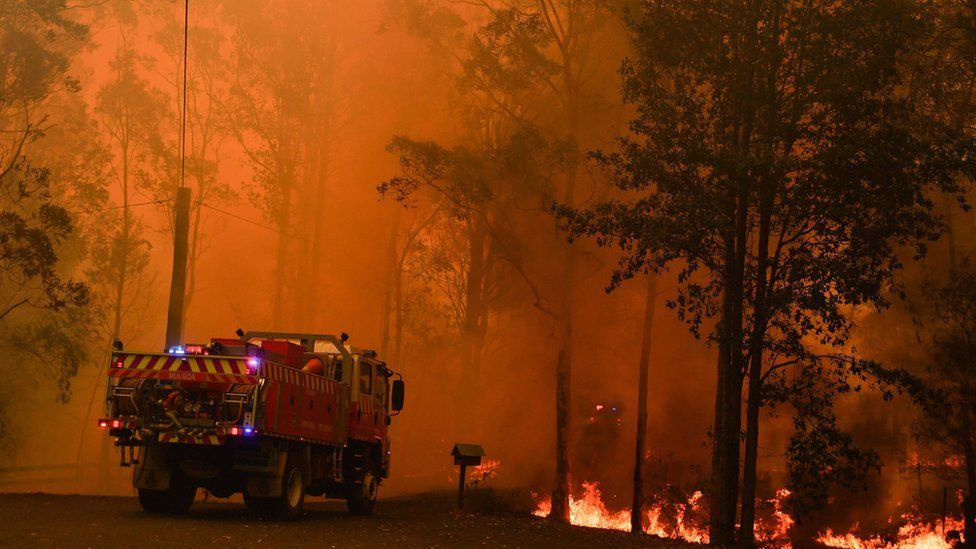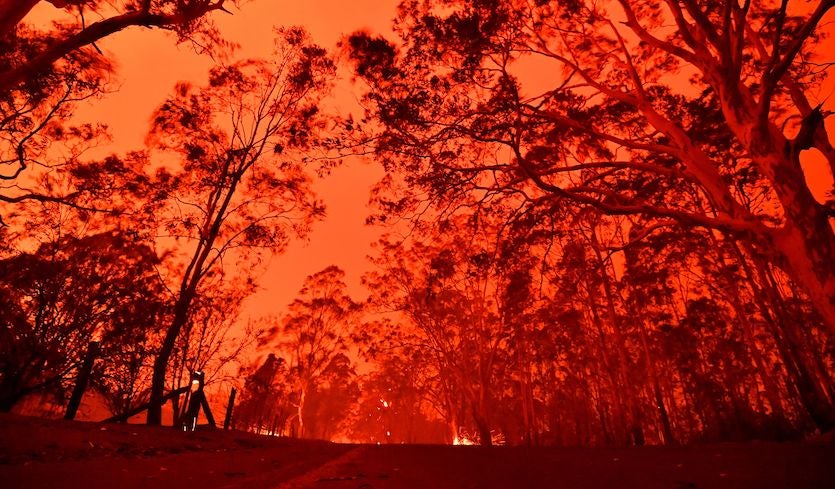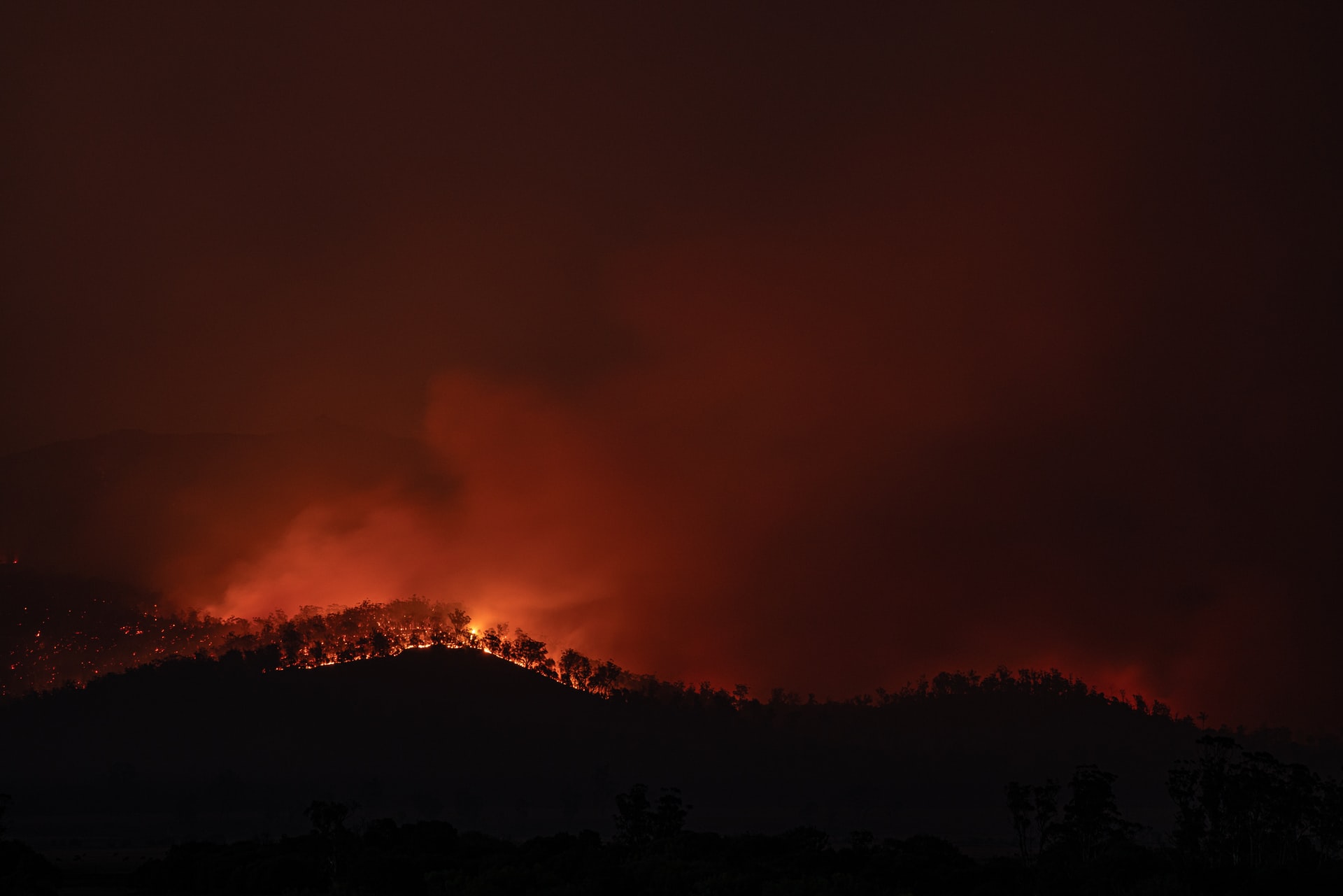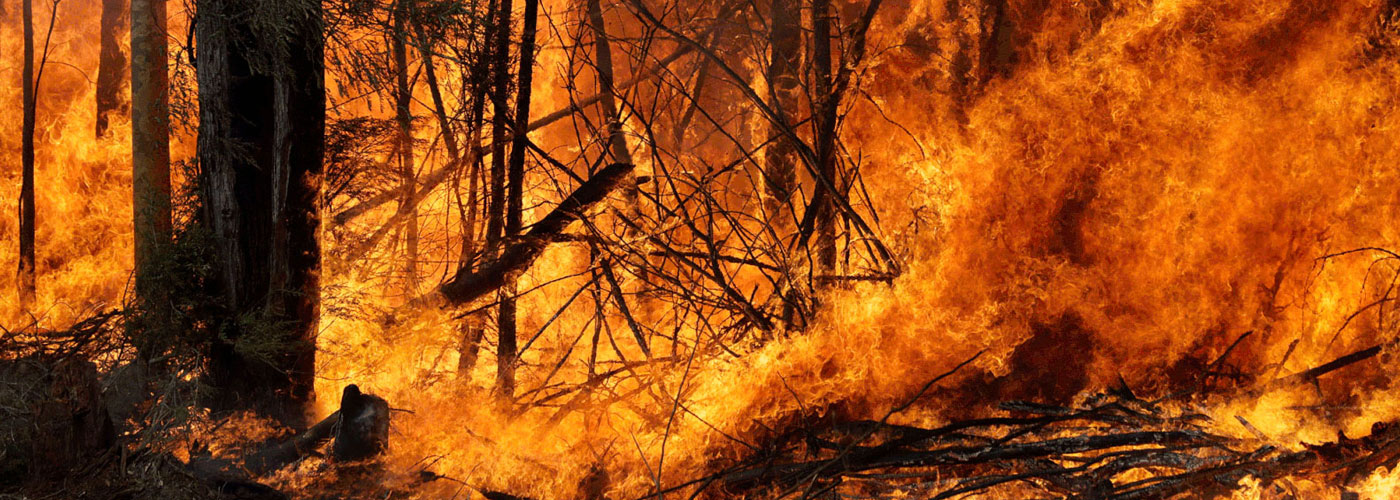FIRE
If the risk of wildfire is to be effectively managed, a good understanding of the combined effects of lightning caused and aboriginal fire on pre-European forest structure and species composition is needed.
It has been said “those who do not learn from history are doomed to repeat it.” This observation is relevant to fire management, as it has become increasingly dependent on public and political opinions, driven by campaign slogans, rather than science.
Activists argue that if you don’t burn the forests, they will become moister and not burn. Wherever this philosophy, rather than active fuel management has been applied, the forests and associated wildlife have been the losers.
In a paper to the 1890 Royal Society of Victoria Meeting, Alfred Howitt summarises the impact of the loss of aboriginal burning on the forests of Gippsland. Much of these forests have similar eucalypt species to the forests of southeast NSW.
The 2019-20 fire season clearly demonstrated that an emergency response model, rather than a bushfire mitigation model leads to inevitable widespread high intensity bushfire disasters. Bushfire inquiries and the federal royal commission recommendations confirmed the current heads of emergency empires are wedded to building larger empires, rather than mitigating risk.
INTRODUCTION TO FIRE ARTICLES
Does Logging Cause or Exacerbate Bushfires?
In recent years there has been a growing list of research papers claiming that logging increased bushfire risk. There appears to be a clique of academics from universities in Queensland, NSW, Victoria, Tasmania and Western Australia that pursue this avenue of research.
Some of the common flaws that underpin many of the research papers include:
- Ignoring the increased bushfire risk posed by declining levels of fuel reduction burning over recent decades;
- Ignoring the structural changes in management of bushfire fighting operations, that have reduced the effectiveness overall response in largescale operations; and
- Ignoring the increasing risk that woody thickening resulting from repeated high intensity bushfires impacting the national parks and reserves system.
Forest Fire Management – Hard Won Lessons Almost Forgotten
The 2019-20 bushfire season was a wakeup call to that high intensity bushfires pose to Australia’s environment and society. Unfortunately, various inquiries continued to move away from bushfire mitigation to focus on emergency response and disaster recovery.
This article documents the rise and fall of the art of bushfire mitigation in NSW.
To Burn or Not to Burn
Ecological and fire research in Australia often revolves around the question of whether to burn or not to burn. Too many academics and land managers fail to consider how we burn to restore and protect our forest environments from high intensity bushfires.
Victorian “Safer Together” & “Residual Risk Policies”
The disastrous 2009 bushfires in Victoria, cost 173 human lives, burnt over 2,000 homes and caused immeasurable environmental damage across 450,000 hectares, generally to the north and east of Melbourne. In keeping with dozens of other post bushfire disaster inquiries, Recommendation 56 of the 2009 Victorian Bushfires Royal Commission Final Report stated:
“The State fund and commit to implementing a long-term program of prescribed burning based on an annual rolling target of 5 percent minimum of public land.”
In 2015, the Victorian Government set out a new approach to reducing the risk of bushfire in Victoria called Safer Together. The safety of rural communities and biodiversity are now in the hands of computer models, rather than on-ground bushfire mitigation experts.
FIRE MANAGEMENT & ECO-POLITICS
On 28 August 2020, academics at the University of Tasmania withdrew a research paper that had linked logging with increased bushfire risk. This withdrawal highlighted the need to reform the peer review and research publishing processes.
The letter from one of the authors of the flawed paper to all Tasmanian state and federal MPs also highlighted the use of research finding by some academics to pursue eco-political objectives.
SETA will continue to lobby for reform of funding and publication of research relating to forest science.
A SETA review of another fire research paper by another University of Tasmania academic is also attached.
SUPPORTING ARTICLES FOR FIRE MANAGEMENT & ECO-POLITICS

New South Wales Bushfire Inquiry
An analysis of most of the recommendations in the NSW Bushfire Inquiry Final Report, confirms little has been learned from the largest bushfire disaster in NSW history. The big losers will continue to be rural and regional communities adjacent to fire prone environments and the birds, mammals and reptiles that will continue to be incinerated by holocausts feeding off fuel loaded forests. Professor Ross Bradstock, head of the Centre for Environmental Risk Management of Bushfires (CERMB) appeared to be preparing us for this outcome, when, on 27 July 2020, the Sydney Morning Herald reported “Professor Bradstock said fire seasons such as Black Summer were going to become more common “and we may have to retreat from fire landscapes and that is a massive thing”. It is a pity that affected biodiversity doesn’t get the evacuation warnings and other choices that we have.
Major winners in the recommendations are the terra nullius fire and ecological researchers. The fire conglomerate will be rewarded with more and more funding to play with new technology. The technology will add to the existing 21st century fire research, much of which lacks any practical foundation. It is likely the research will continue to predominantly focus on blow-up days, to play down the value of broad scale fuel reduction burning in mitigating bushfire risk and aiding bushfire control. When will 21st century incident controllers and fire researchers learn that fires are contained and extinguished between blow-up days? We already know that on blow-up days, fuel loaded forests and massive uncontrolled fire fronts result in catastrophic damage to human and ecological assets. Too much precious time between blow-up days and tens of millions of dollars was wasted in NSW as incident controllers used their aircraft fleet to bomb running fire fronts. Instead of aggressive attack to contain fires during favourable conditions, too much time was spent “watching and waiting” Meanwhile, incident controllers, seemed reluctant fight fires at night, when control is usually easiest. Time and again, frustrated experienced fire fighters attempts to track fire perimeters, back-burn as required and blackout were frustrated by controllers refusal to grant permission to act.
When time between blow-days is recognised, the value of adequate levels of fuel reduction burning becomes obvious. Targeting hazard reduction in proximity to assets, will ensure past flawed “research” will be validated and within a decade, the 512,000 hectare, Gospers Mountain fire may lose the title of the largest fire area burnt from a single ignition source. The hazard reduction burn recommendations would seem to confirm that no value is placed on the state’s biodiversity assets. Other recommendations will ensure fire management authorities will have lots more information and bureaucratic tasks to fill in the off season.
.
FIRE – 2020 COMMONWEALTH ROYAL COMMISSION AND NSW & VICTORIAN BUSHFIRE INQUIRIES
2020 Bushfire Royal Commission and Inquiries – Locking in Future Megafire Disasters
After spending tens of millions of dollars on the Commonwealth Royal Commission and state government Inquiries, it appears there was no appetite for the fundamental change needed to mitigate the risk of future bushfire disasters. Despite promises, it appears that future disasters are locked in, as governments focus on emergency response, not risk mitigation. All levels of government are intent on implementing failed “research” recommendations that promote fuel reduction adjacent to human assets, rather than landscape scale fuel management.
Commonwealth Bushfire Royal Commission
The Royal Commission was headed by three people lacking personal experience in bushfire science, history, mitigation, control or administration. Vocal academics, most of whom have never been to a bushfire, got their views recognised. Emergency services organisations, schooled in the art of emergency response, rather than bushfire mitigation were also heard. Real world experienced fire scientists and bushfire controllers were generally treated as “lay people” and their hundreds of years of practical experience largely ignored.
Instead of speaking to bushfire experts, they talked to “fire chiefs,” activists running climate change political agendas, university ecologists, with apparently no understanding of the impacts megafires have on biodiversity, no skin in the game and no responsibilities for land or bushfire hazard management.
The Commission seemed to think that more and bigger water bombers will be the answer to address future bushfire risk. Overseas experience, as well as the experience of 2019-20 shows the water bombing fleet was of little value on “blow-up” days.

VICTORIAN INSPECTOR GENERAL FOR EMERGENCY SERVICES BUSHFIRE INQUIRY
The Victorian Bushfire Inquiry and Government response, appear to be focused justifying the flawed “Safer Together” policy. As with other government bushfire inquiries, many of the recommendations are administrative in nature and do nothing to address obvious deficiencies in bushfire risk mitigation and decisive deployment of fire fighting resources during bushfire emergencies.
Less than five years after the 2009 Victorian bushfire disaster, achieving the fuel reduction burning target recommended by the 2009 Victorian Bushfires Royal Commission was too hard, so an alternative approach was needed. In February 2015, the Minister for Environment, Climate Change & Water, Lisa Neville MP and the Minister for Emergency Services, Jane Garrett MP wrote to Tony Pearce, Inspector General for Emergency Management. They directed the Inspector General for Emergency Management “to conduct a review of matters relating to bushfire fuel management on public land in Victoria and make recommendations on the form of future performance targets for the fuel management program.” The letter advised that “there has been significant work undertaken by DELWP, through its Bushfire Management Reform Program, to develop and operationalise a risk-based approach to bushfire management. We are also advised that through this reform program, DELWP has now developed a viable alternative to a hectare-based performance target.” The Ministers also advised that: “Expert technical review of DELWP’s bushfire fuel management program,” was out of scope.

Professor John Handmer from the Centre for Risk and Community Safety, RMIT University Melbourne and Ms Adriana Keating from the International Institute for Applied Systems Analysis, Laxenburg Austria, conducted an analysis of the hectare based and the risk based policies. Twelve criteria were used in the analysis and scored on a 0 to 4 scale and the academics concluded: “Aggregating the scores we found that the hectare based policy scored 13 out of a maximum 48, while the risk based policy scored 40 out of 48. Two assessors scored the policy target options independently with results within four points of each other.”
The “Risk Based Approach” to bushfire mitigation has been so ineffective, the Victorian Government has refused to make forest fuel load mapping publicly available in recent years. The two experts who analysed the hectare and risk based approaches scored burning, as recommended by the 2009 Royal Commission, at zero. This highlights the total lack of understanding of fire science of these experts and the DELWP staff who oversaw the development of the Safer Together policy.
SETA SUPPORTING ARTICLES ON HISTORICAL FIRE MANAGEMENT
FIRE – HISTORICAL AND OTHER INFORMATION
With Warmer, Drier Climate, Why are Governments, Fire Management Agencies and Public Land Managers Choosing to Do Less to Manage Forest Fuels?
A consistent theme in the House of Representatives report on the 2002-03 bushfires A Nation Charred, was evidence from many parts of Australia that the declining level of fuel reduction burning was a major contributor to the devastation of almost four million hectares of forest across southern Australia. The report also highlighted that fuel reduction burning was made more expensive and difficult due to changed legislative and regulatory requirements, relating to environmental requirements.
Influence of Settlement on the Eucalyptus Forests of Gippsland
In a paper to the 1890 Royal Society of Victoria Meeting, Alfred Howitt summarises the impact of the loss of aboriginal burning on the forests of Gippsland. Much of these forests have similar eucalypt species to the forests of south east NSW.
Fire in East Gippsland by John Mulligan
On 17 September 2016, a fund raising event for the CFA and an information day for Mallacoota residents was held at Double Creek near Mallacoota. A number of thought provoking presentations were delivered during the day.

John Mulligan, who was 8 years old when the 1939 fires occurred, shared his experiences of fire management and views on how proper forest fuel management can help minimise the risk of large wildfires.

